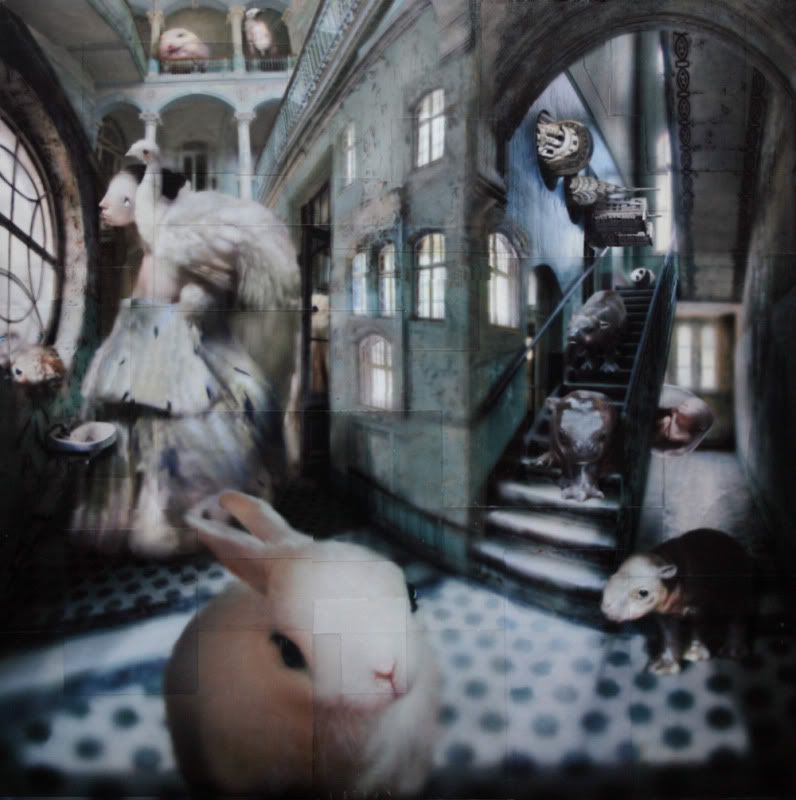
It’s been awhile since an artist’s body of work took my breath away, but Chris Berens’ paintings leave me floored. Upon first glance, I thought his dreamy menageries were the work of a few clever photoshop filters/poor screen resolution on my computer, but that is not the case.
According to one of his press releases, Berens’ work is completely hand painted: “He begins by painting small scenes and figures in ink, bistre and varnish on glossy paper. The images remain wet for days as Berens perfects and repeats them, creating multiple versions of each image on a page. Once completed, he cuts up each sheet into smaller pieces, reserves the desirable elements and peels away the clear coating layer from the underlying paper. The remaining semi-transparent images are stacked, layered and collaged onto panel to create the final work. Each piece is executed entirely by hand. No digital or photographic elements are used.”
I can barely put into words how much I love his pieces and am adding “seeing Chris Berens’ art in person” to my bucket list above “sky diving” and below “eating guacamole in Mexico.” Priorities. Much in the style of DaVinci, the artist leaves some of his rough pencil sketches in the background of his work and considers the artistic process and seeing the proverbial ‘cracks in the diamond’ to be what makes it special:
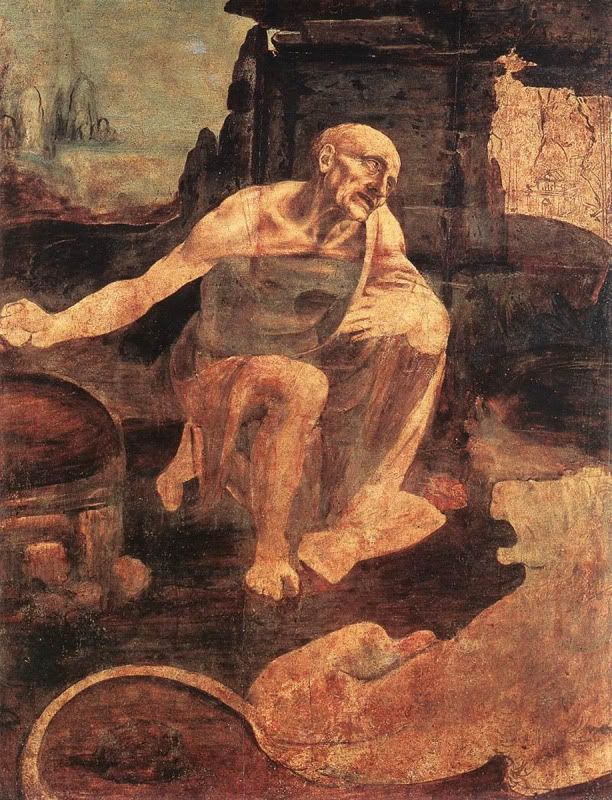
“The thing about ‘unfinished’ works is – for example with Da Vinci’s “Hieronymus” – that it’s a guy with a lion. If he had finished it, it would still be a guy with a lion. Now it’s a guy with a lion, but you can actually see all of the emotions, doubts, considerations and decisions the artist has made. So it’s not just a guy with a lion, but both ‘guy’ and ‘lion’s’ whole history.
I don’t believe there are any normal people. Normal people are the ones standing behind you in line at a post office, passing you by in an oncoming car on the highway. They stop being ‘normal’ the moment they open their mouths, the very second you look into their eyes, and start being human, start being real. Not to say that a perfectly polished painting has no soul, or is not real. But I really do love the openness of a work that you can see through to the very bottom. The fact that it clearly has a history gives it a future, in my opinion.”
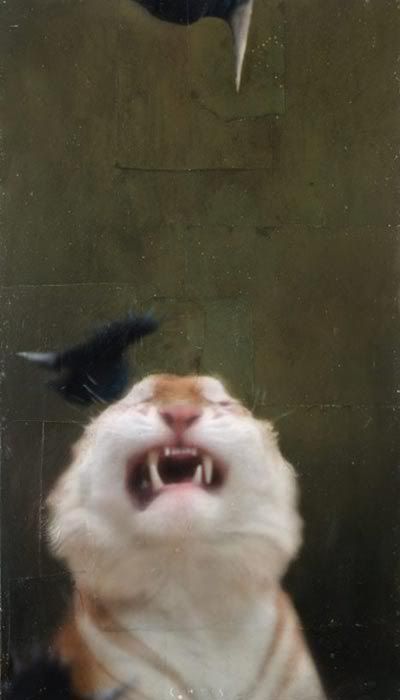
Berens, who was born in 1976 in the small town of Oss, Netherlands claimed he was only able to illustrate about 5-10% of his inner workings when he began painting and as his techniques improved, he now feels equipped to interpret closer to 50%. Honestly, when he gets to 70% I think my heart will explode.
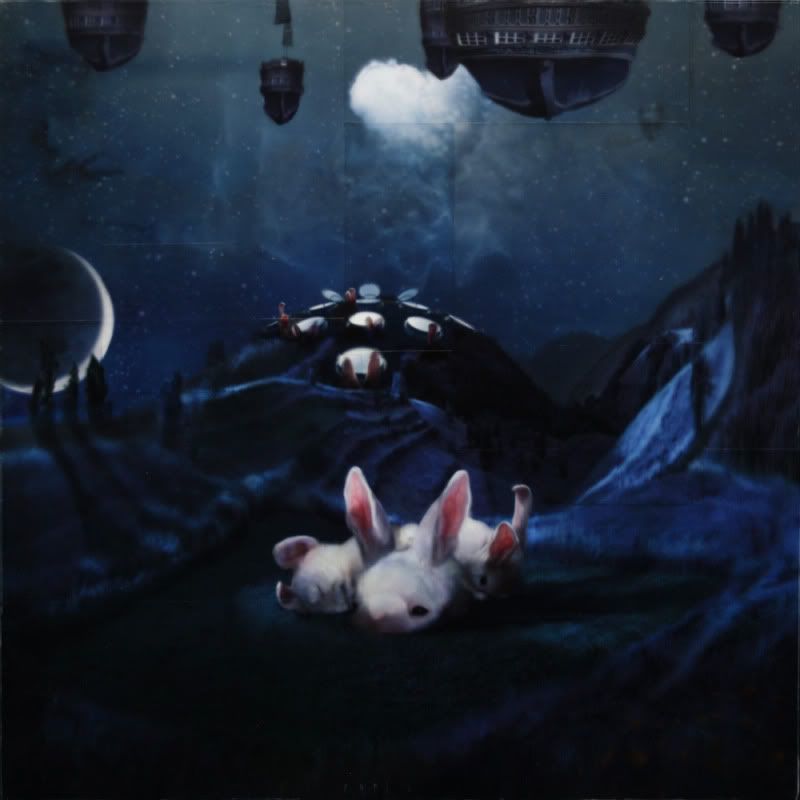
There is so much about his work that makes it fascinating to me, the way he deftly utilizes lighting techniques reminiscent of the early Dutch masters like Rembrandt and Vermeer, or the use of reoccurring imagery which reminds me a bit of Dali, and his subtle insertion of his father into various pieces. But for all the extraordinary imagery playing out in his mind, Berens is pretty real about what he does. He is merely attempting to render the world in his head as he sees it without distortion to the best of his ability and tries to not let thinking/symbolism interfere as it would cheapen the whole experience:
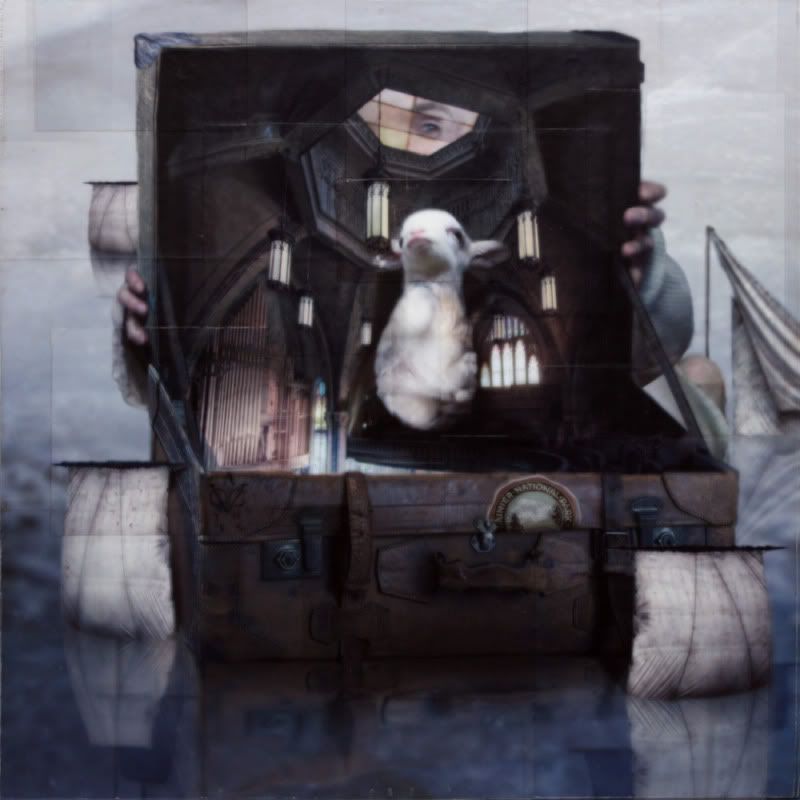
“I take very good care of this world inside my head, and it provides me with an endless source of inspiration. Just as I develop in the regular world, so does this private world of mine develop on its own as well. In many ways, it’s similar to the regular world, but at the same time looks and feels quite different. So what I paint is not an artistic representation or adaptation of animal or human figures or landscapes from the regular world. For me, it’s an actual representation of what I see, no more and no less.”

I think we all have worlds similar to Berens’ playing out inside of us and some people are just more atuned to them and able to openly access and acknowledge them.
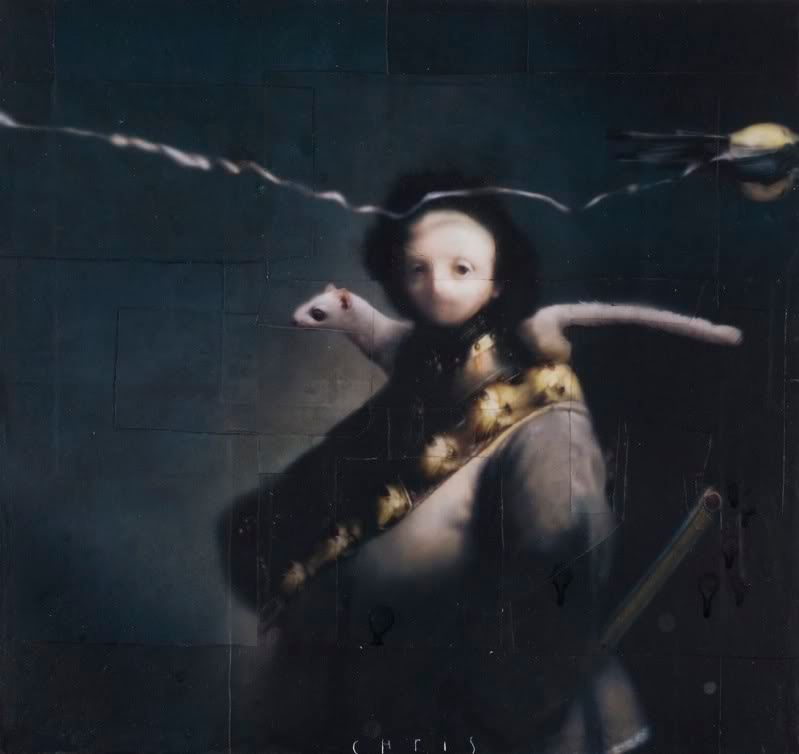
I spent a good part of my afternoon reading an interview with Berens and Erratic Phenomena between meetings and exhilarating multi-tabbed excel spreadsheets.
I thought I would share some excerpts I particularly enjoyed:

“As a boy, I was pretty much what I am now – a dreamer. I didn’t really belong in any subculture, nor was I explicitly an outsider. I had enough friends, but I was a very quiet and to-myself little boy. I think I was usually found on the playground amidst all the other kids who were screaming and running around – only I did none of that. I would be befriending a little bug or a bird, which I was certain was trying to tell me something.
I always had this really special feeling over me… it’s closest to what Christmas feels like. Or rather than “over me,” it’s a feeling of another place, a warm place, deep inside me, and I fill that place with all that I see and hear. But as soon as all those things enter me, and make the transition from something on my retina to a memory, they become wondrous, glowing and extraordinary. That is why I find the ‘here and now’ the least interesting reality. Not that I hide from it, or don’t like my ‘real’ life. I love my life, I love living. And there would be no marvelous world inside me if it weren’t for reality. “
————————
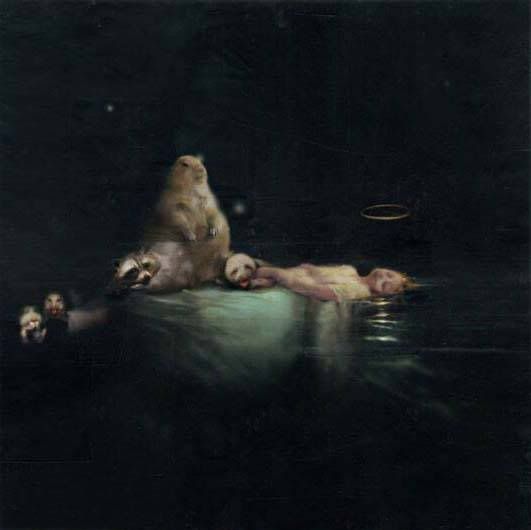
EP: As a child, you believed that you had a group of otherworldly animal companions that guided and comforted you. As you grew older, these creatures began to fade, and you began to have difficulty accessing that world. However, a few years ago, at the time of your father’s death, you began to be able to perceive them again – as if out of the corner of your eye – and you realized that what you were seeing were guardian figures which had come to take your father home. Has your window into that other reality been open ever since? Have you gained a greater understanding of what you’re seeing?
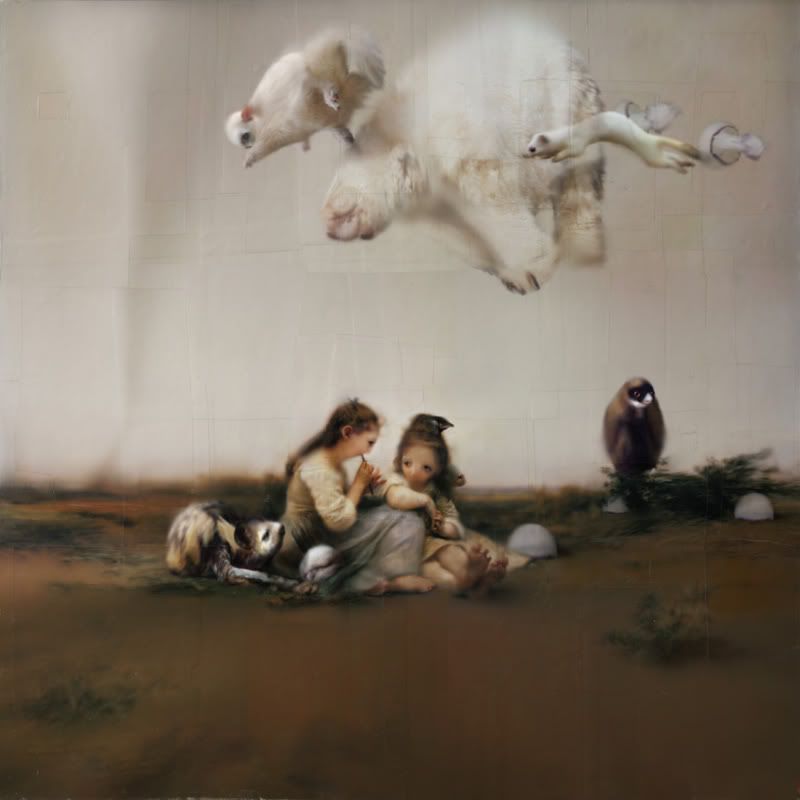
CB: It has been open ever since. I always had it. As a kid, they were my imaginary friends. As an adolescent, they were still there, but not so much in the shape of animals – more an overall entity, a feeling that I wasn’t alone, something that made me feel safe, and understood.
Those polar bears running alongside me – they did appear towards the end of my dad’s life. I’m not sure if I actually realized they were guardian figures, come to take him home, but that’s how things work in my brain. This was a pretty extreme time, so I guess that called for drastic measures. I remember riding my bike to my parents’ home, feeling so very small and scared and alone. Thinking how futile it all seemed, me bicycling all the way home, emptyhanded, with nothing to offer – no solutions, no cure, no comforting words, nothing. And that’s when they came, flanking me and behind me, leaving me at the head of the pack. And by the time I set foot into my parents’ home, I felt like I was bringing him the greatest gift. Those big, impressive, awe-inspiring polar bears. I know it sounds dumb, but there they were, standing behind me, breathing heavily from the journey, casting this huge bright shadow.
They’ve always been there, ever since. I don’t always see them, but they’re never gone. They appear when they have to, in the shape needed in that particular situation. I don’t know what they are, or why, but I do know where they come from – from that special place inside me – and every once in a while that place floods, I guess. I can make it flood, too. By painting, that is.”
—————-

“my internal world [is] an autonomous world, but its raison d’etre is drawn from the things that I see, and hear, and participate in. Everything in it is an essential part of it. Everything affects everything. With every new entry, there’s a mutual adaptation. The newcomer, ordinary as it may be, will adjust to its new fantastic environment, and with that, the world will be a richer, more complete, but also more subtle and delicate one. “
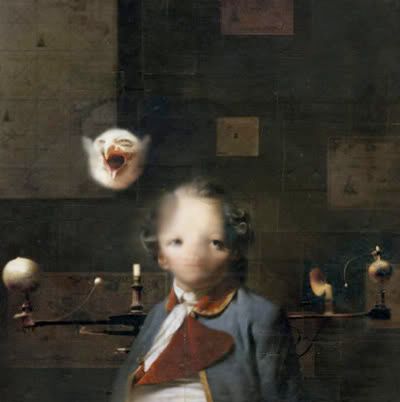
If you’ve made it this far and found it interesting, you should read the full interview on EP where he goes a bit more in depth into his thought process, musings on life and death and what is inside our heads. I like that the dialogue took place in person because it reads as if you are sitting in front of this creative individual, who is bursting with innumerable ideas, and watching as he tries to articulate the inner workings of his soul. Its unpolished, there are parts where he gets caught up in his head trying to explain such complex concepts, and its those hiccups and streams of consciousness that makes Berens feel accessible —which is ultimately refreshing, real, raw, and exemplifies how all art/artists should be.





